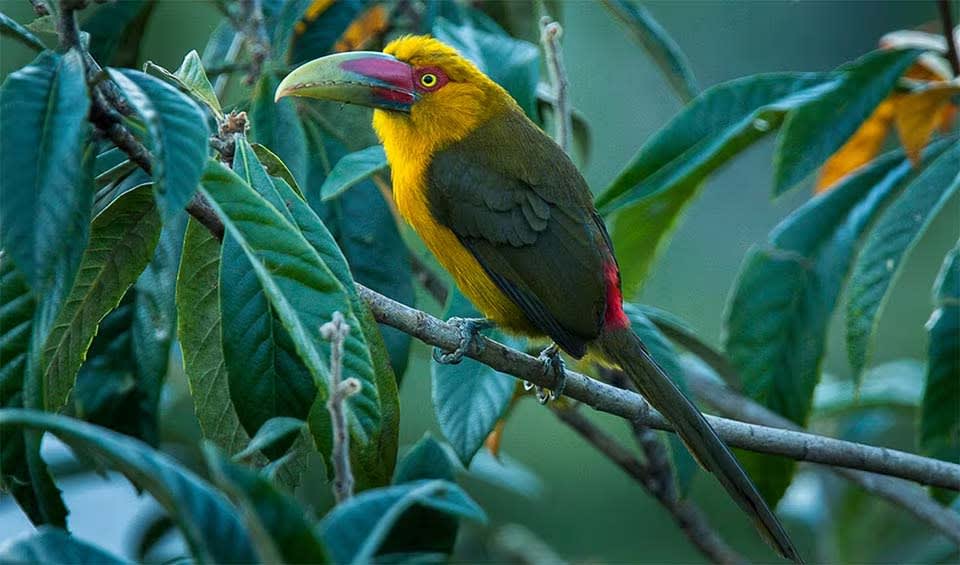Pteroglossus – Aracaris
These beautiful medium-sized toucans have large, contrastingly patterned bills
Aracaris are a distinctive and enchanting group of birds within the toucan family, easily recognizable by their medium size and the brilliant splashes of color they add to the canopies of Central and South American tropical forests.
Unlike their larger toucan relatives, aracaris tend to be more slender and agile, adaptations that enable them to maneuver through dense forest canopies with grace. While still sizeable and impressive, their bills are more streamlined and slightly curved, allowing them to deftly pluck fruits and berries from the branches. This specialized bill is also a tool for foraging on small invertebrates and insects, which become particularly important dietary components during the breeding season when the demand for protein increases.
Aracaris are predominantly frugivorous, and they play a critical role in the dispersal of seeds through their habitat. The fruits and berries they consume pass through their digestive system, and the seeds are excreted in different locations, which helps to maintain the diversity and health of the tropical forest ecosystem. Their feeding habits also lead them to occasionally raid nests for eggs and nestlings, displaying their opportunistic feeding nature.
Socially, aracaris tend to be more gregarious than their larger relatives, often seen in small flocks that move together in search of food. These birds exhibit complex social behaviors, including playful interactions that can often be observed among flock members.
Reproductively, most aracaris are monogamous, forming pairs that share a strong bond. Both parents are actively involved in all aspects of rearing their young, from nest building to feeding. They typically choose natural cavities in trees as nesting sites, which they may also line with wood chips. The clutch size usually ranges from two to four eggs, and both parents take turns incubating them.
Species in this genus
Saffron toucanet
They have a unique habit of storing excess food by hiding it in tree crevices, which they may return to later
Collared aracari
An attractive small toucan found in Mexico, Central, and South America
Curl-crested aracari
Beautifully colorful bird with unique curly feathers on its head
Fiery-billed aracari
Vulnerable to threats as it has a very limited and narrowing range from Costa Rica to Panama





